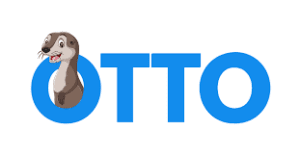Are veneers something you are thinking about getting done? Are you unsure whether the cost of this dental cosmetic procedure will be covered by insurance? There’s nowhere else to look. We address the crucial query: Will insurance cover vendors? in this comprehensive guide.
Will insurance cover veneers? What You Need to Know

Anyone considering veneer enhancements must comprehend this issue. Let’s examine insurance coverage details and learn more about this popular dental operation. Prepare to discover the truth about veneer coverage and make a well-informed choice about your dental journey.
Introduction
Are you exploring veneers to improve the look of your smile, but you are not sure if your insurance will pay for it? You’re not by yourself. When organizing your dental procedures and finances, it can be quite important to know if veneers will be covered by insurance. We are going to dive deep into the specifics of veneer insurance coverage in this post, going over several cover-determining requirements, options, and important FAQs to help you make an informed choice.
Factors Influencing Insurance Coverage

Cost Considerations
Veneers are a costly dental treatment mostly used for cosmetic purposes. If considered to be medically required as opposed to simply being cosmetic, insurance usually covers them. it is important to know your policy’s position on cosmetic procedures before getting therapy.
Medical Necessity vs. Cosmetic Enhancement
Insurance companies prefer to pay for practical operations rather than just cosmetic ones, such as veneers. Since veneers are generally used to improve appearance, coverage eligibility may be affected, therefore, it is important to be aware of the terms of the policy in advance.
| Aspect | Medical Necessity | Cosmetic Enhancement |
|---|---|---|
| Objective | Addresses functional issues or health concerns. | Focuses on improving appearance or aesthetics. |
| Insurance Coverage | Likely to be covered by insurance if deemed necessary for health reasons. | It’s usually not covered by insurance as it’s considered elective. |
| Examples | Treatment for a decayed tooth, root canal therapy, or orthodontic work to correct a misaligned bite. | Veneers, teeth whitening, or cosmetic bonding for minor imperfections. |
Pre-existing Conditions
It is important to review your insurance policy because some policies do not cover cosmetic procedures like veneers or pre-existing dental issues. By being aware of the specifics of your coverage, you can decide whether veneers are covered and save extra money.
Understanding Insurance Coverage for Veneers

In-Network vs. Out-of-Network Providers
When you choose an in-network or out-of-network dentist, it can affect your coverage for veneers. Usually, in-network providers offer negotiated pricing, which may affect coverage. When analyzing veneer coverage, it is important to take your provider’s network state into account to understand the possible costs.
Policy Limitations and Exclusion
To understand any restrictions or exclusions related to dental operations such as veneers, carefully go over your insurance coverage. Eligibility for coverage may be affected by annual maximums or exclusions imposed by certain policies on particular cosmetic procedures. Knowing these things in advance guarantees that you are informed of any prospective costs related to veneer treatment.

Pre-authorization Requirements
Pre-authorization, or pre-approval, is required by specific insurance plans for operations like veneers. Claims that are not approved could be rejected, in which case you would be responsible for the entire amount. It is important to make sure you receive the required approval in advance to prevent unexpected expenses related to veneer treatment.
Alternatives to Consider
Composite Bonding
By adding tooth-colored resin to teeth, composite bonding offers a more affordable option for veneers. This is a more cost-effective choice for cosmetic dental improvement than veneers because the procedure is usually less expensive. For people looking to improve their appearance, it is a tempting option because it is reasonably priced and provides comparable aesthetic advantages.
Teeth-whitening treatments
Concerns about tooth discoloration can be effectively treated with professional teeth whitening procedures without the need for veneers. These procedures effectively whiten your teeth and provide a less painful and expensive option. If patients’ main worry is discoloration, veneers may not be necessary if they choose tooth whitening as their treatment.

Orthodontic Solutions
Orthodontic treatments, such as braces or clear aligners, may be suggested when dental defects are caused by misalignment. Resolving alignment problems can usually avoid the need for veneers completely, offering a more long-term and safe way to improve the appearance of teeth.
Will insurance cover veneers?

Understanding Coverage Eligibility
Veneers are subject to a wide range of insurance coverage between providers and policies. Veneers that are medically required may be covered in part by certain plans, but cosmetic operations may not be covered at all by others. It is important to carefully go over your insurance to understand the details of coverage and any potential extra expenses related to receiving veneer treatment.
Consulting with Your Provider
Make an appointment for a consultation with your dentist to find out if veneers are covered. They are going to evaluate your insurance requirements, go over your policy, and offer advice on possible coverage. This stage helps prepare for any extra expenses related to veneer treatment and guarantees clarity on possible insurance payments.
FAQs
Can dental insurance pay for veneers?
- Dental insurance can still cover veneers, but the level of coverage changes according to the plan and provider.
Which factors influence veneer insurance coverage?
- Annual maximums, policy exclusions, and whether the treatment qualifies as medically important are among the factors that impact insurance coverage for veneers.
Are there any alternative therapies that have a higher chance of being covered by insurance?
- Because alternative procedures like composite bonding and in-office teeth whitening are less painful and more economical than veneers, they may have a higher chance of being funded by insurance.
How can I find out if veneers are covered by my insurance?
Check the specifics of your policy or get in touch with your insurance company directly to find out if veneers are covered by your insurance.
Can veneers be paid for by insurance if they are deemed medically necessary?
- If veneers are found to be medically important to treat functional problems like tooth decay or structural damage, insurance may pay for them.
Is it possible to appeal a veneer’s claim rejection?
- If your veneer’s claim is rejected, you can file an appeal by supplying more paperwork, such as a letter from your dentist explaining the requirements of the procedure or supporting documentation of your medical necessity. To find out the specific appeals procedure, get in touch with your insurance company.
Conclusion
In conclusion, It might be difficult to figure out veneer insurance coverage, but to make an informed dental care decision, you must understand your policy and consider other options. You may more accurately analyze coverage options that meet your needs if you are aware of the details of your insurance policy and take into account alternatives like composite bonding or professional teeth whitening.
It is important to speak with the insurance company and dentist to learn about customized coverage options and possible extra expenses. Planning for the best dental care is made easier and clarity is guaranteed by this proactive approach.
Related Articles
- Top 4 worst life insurance companies in 2024
- 3 worst long term care insurance companies in 2024
- 7 best ways to increase insurance agent productivity
- Best lv home insurance reviews in 2024
- Best Review Otto insurance legit(2024)
























